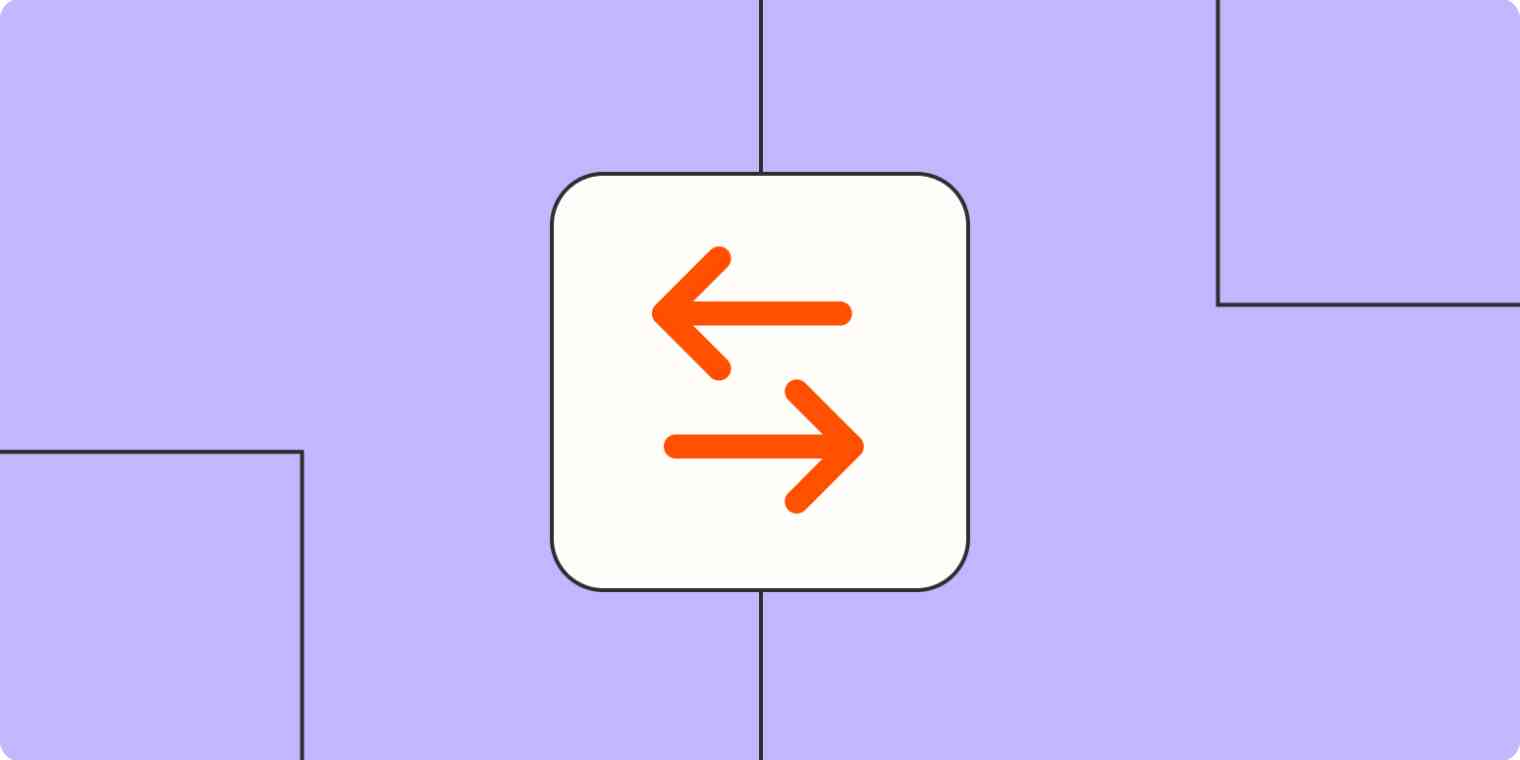When I was nine years old, I wanted to be a fashion designer. But I was a precocious little one, and I knew that in order to succeed, I'd need customers. I had this amazing idea for a website where fashion designers could sell directly to customers. Turns out my genius idea was a two-sided marketplace—and a whole bunch of them exist now.
Two-sided marketplaces are everywhere now, and it makes sense: they efficiently match supply to demand (and vice versa) and are a win-win-win for suppliers, customers, and the marketplace itself.
What is a two-sided marketplace?
A two-sided marketplace (also called a two-sided network) is a platform that brings together two groups of users—usually buyers and sellers—around a specific type of product or service. It's not really a new idea, per se, and you'll see it in all sorts of industries. Here are some examples:
Job boards (job seekers and companies that are hiring)
Health platforms (patients and doctors)
Freelance marketplaces (freelancers and companies that are contracting)
Social media platforms and search engines (users and advertisers)
Ride-share companies (riders and drivers)
Video game consoles (gamers and game developers)
Unlike a traditional value chain, where value passes from sellers to buyers only, two-sided marketplaces draw costs and generate revenue from both sets of users on each side of the platform. It's usually done through commission charges, subscription fees, and other means, but it doesn't even have to be directly generated revenue. Some marketplaces only charge one side (buyer or seller): for example, a job board may charge employers/recruiters to post jobs or contact candidates, but they may not charge the candidates to upload their resumes.

Two-sided marketplace examples
On most lists of two-sided marketplaces, you'll get some standard examples: Uber, Lyft, Airbnb, Indeed, Etsy—all those big names. And it's important to keep those in mind: they've been hugely successful for a reason. But I wanted to shine a light on more approachable examples, so I reached out to some folks who've been successfully building two-sided marketplaces.
1. Total Shape
Total Shape is a two-sided marketplace that connects fitness and wellness professionals to their ideal clients. This company has an extensive network of fitness enthusiasts, nutritionists, medical professionals, and dieticians who help people improve their health/lifestyle and achieve their fitness goals with the right exercise regimen, good diets, and supplements.
Total Shape vets all their fitness personnel to ensure that they'll guide their clients with evidence-based fitness and health information (through clinical expertise and scientific research).
2. Events Made Simple
The team at Events Made Simple operates a two-sided marketplace that connects businesses that are organizing corporate events with the conference and meeting venues that host those events. They also provide enjoyable and fully inclusive team-building activities that increase productivity and engagement in the workplace.
Events Made Simple has a search tool that allows event planners to narrow down their conference requirements, compare venues, add on team-building activities, review quotes, and make a booking—all on one site.
On the flip side, the company vets venues and hotels that share their commitment to delivering exceptional events, ensuring that their clients can feel confident in their choice.
3. Remotive
Remotive is a remote job board that connects job seekers with hiring companies. Employers and recruiters can post jobs by region and set up company profiles to showcase their brand and help potential employees make the right job decisions—and they get a built-in audience of candidates on the site.
For candidates, the site has a simple interface with powerful filtering options, which helps job seekers search for employers based on their criteria. Remotive has helped match candidates to companies like Zapier, Airtable, and Salesforce.
It's good for buyers and sellers alike
If you've ever used Amazon, eBay, Etsy, Uber, Lyft, or Airbnb (and if you haven't, I think you've set a record), you understand the benefits of two-sided marketplaces for buyers: it's easier and quicker to find what you need—and you pay less for it.
But it's not just good for individuals looking for a personalized cross-stitch of their dog. Let's look at Events Made Simple again as an example. In most cases, businesses would need to scour the internet and physically visit a ton of event locations to find the best ones for their corporate events.
Events Made Simple offers a two-sided marketplace, where the best event locations in the UK showcase their venues (pre-vetted by Events Made Simple). So businesses can just hop on the platform and use a couple of filters to find a good location, compare venues, and make a booking. And if they have the budget for it, they can pay Events Made Simple for their team-building services too.
This competition between suppliers means the prices of products and services tend to remain competitive—an attractive value proposition for customers. Vaibhav Kakkar of Digital Web Solutions explains: "By allowing multiple sellers to compete on a single platform, buyers can compare prices and find the best deal. This can also help to drive down prices as sellers compete to offer the most competitive rates."
Of course, sellers love it too, as successful two-sided marketplaces generate a lot more demand for sellers than they'd find on their own. As Robert Hoffman, the Marketing Manager at CashbackHero, put it, two-sided marketplaces "give vendors access to larger markets due to their ability to aggregate products and services from multiple providers."
Job boards are a great example of this. Companies aren't going to get a ton of candidates if they only post job openings on their company website. Posting openings on job sites gives hiring companies access to thousands of job seekers who have the necessary skills to fill their open position.
And it's good for the marketplace, too
Two-sided marketplaces usually don't own any inventory; all they do is provide the infrastructure for two parties to connect with each other and exchange value. And most of the marketplace owners I spoke to talked about how scalable the two-sided marketplace business model was because of this.
Isaac Robertson, the CEO of Total Shape, explained: "Once the platform is established, adding more professionals and clients can be done with minimal overhead, making it easier to grow the business."
It also reduces marketing costs, he noted. "Traditional businesses often incur high costs for acquiring customers, marketing, and building infrastructure. In contrast, two-sided marketplaces can leverage the network effect to reduce acquisition costs and can often rely on the professionals and clients to provide most of the content."
5 tips when considering a two-sided marketplace business model
Two-sided marketplaces don't seem to be going anywhere—but like any business model, they have pros and cons. I spoke with some experts and two-sided marketplace owners, and they filled me in on what's important to know if you're considering the model for your business.
1. You need volume
The more people who use a product or service, the more valuable it becomes to those people. It's called the network effect, and social media is a great example: it becomes more and more valuable to you as more of your friends, colleagues, and favorite content creators use it.
"A two-sided marketplace creates a virtuous cycle where the more users it has, the more valuable it becomes for all users," says Vaibhav Kakkar, CEO of Digital Web Solutions. "As the number of buyers and sellers on the platform increases, it becomes easier to match them with each other, creating a larger pool of potential transactions."
But in a two-sided marketplace, there's another layer—and another fancy word—at play: cross-side virality. As a marketplace gets more buyers, it attracts more suppliers. These new suppliers attract new buyers, who, in turn, attract providers—you get the point.
The bottom line: in order to have a successful two-sided marketplace, you need volume, both on the supplier side and the customer side.
2. Focus on the more difficult user group first
Of course, when it comes to getting that volume, there's what's commonly referred to as the chicken-or-egg problem. Buyers won't use a platform unless it has a high-quality selection of sellers; sellers won't sign up for a platform unless it has a lot of buyers interested in what they sell.
There are plenty of ways to tackle the chicken-and-egg problem, but your best bet is to focus on the user group that's more difficult to get in your marketplace niche. Once you get the harder group, the easier side flows in almost instantly.
For most marketplaces, the harder user group to get is the seller. For example, it's much harder to find companies that want to post jobs on a new job board than it is to find people willing to browse a job board. That's why job recruitment sites tend to focus on getting employers to post job openings first. Once there are enough job postings on the site, job seekers will naturally visit the site to see if there's anything that fits.
3. Build trust on both sides of the marketplace
One way to stand out as a two-sided marketplace is to vet both your buyers and your sellers. If you're Amazon, you can let anyone in your marketplace, but if you're just starting out, you need to build trust with your buyers and sellers. By pre-screening your early adopters, you ensure a high quality for both sides of the equation.
For example, the best job boards vet both the companies and the job seekers they let onto the platform, so companies don't have to be concerned about getting low-quality (or even fraudulent) candidates, and similarly, candidates don't have to worry about getting recruited by a fraudulent company (it happens more often than you'd think).
4. Educate and monitor your users
On top of vetting users, the best two-sided marketplaces also educate sellers on how to communicate with buyers, and they provide rules on what is acceptable and what isn't. On the flip side, buyers have to be closely monitored to ensure that they don't try to defraud the marketplace or renege on paying for services.
Lisa Dietrich, a partner at Girokonto.io, knows how hard it is to keep track of all of this. "Ensuring that all parties abide by certain standards and regulations is something that requires close monitoring," she says. "One bad actor can tarnish the reputation of the entire platform if its activities go unchecked."
5. Watch out for marketplace platform leakage
One of the appeals of two-sided marketplaces is that they usually control the transactions made between buyers and sellers. That frictionless experience they create, along with platform support for any issues that arise, is part of what attracts buyers and sellers.
But when something goes wrong, it can lead to folks taking their transactions off the platform. If the payment process isn't smooth or the pay cut the platform takes gets too high, both parties may agree to run transactions outside the marketplace to get a better experience or avoid paying the commission. That's called marketplace platform leakage.
That's all to say: don't skimp on creating an excellent user experience. Your marketplace needs to be easier to use than a direct buyer-to-seller transaction would be, or folks will jump right off your platform for a better, and possibly less expensive, experience.
Related reading:






